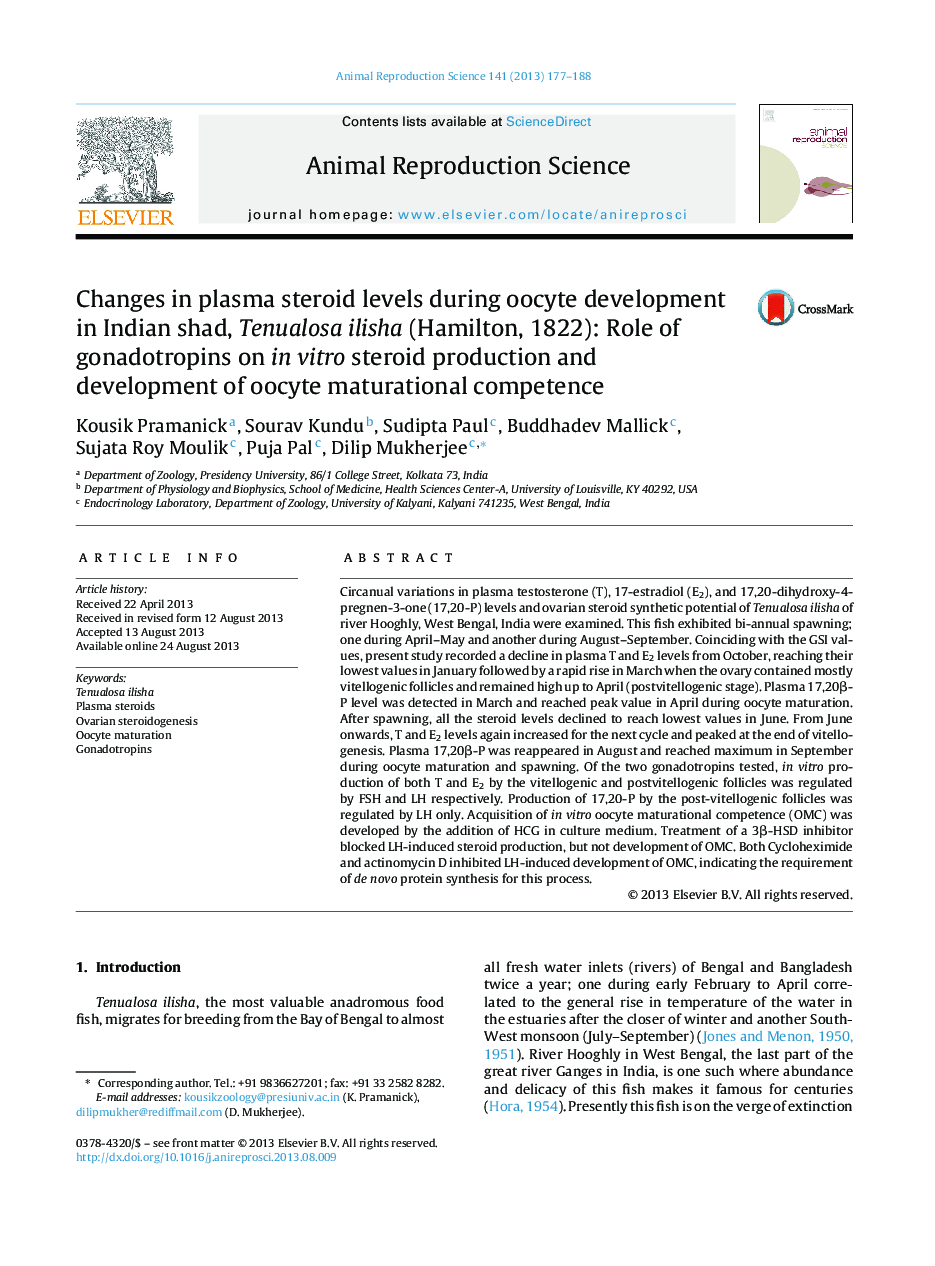| Article ID | Journal | Published Year | Pages | File Type |
|---|---|---|---|---|
| 2072927 | Animal Reproduction Science | 2013 | 12 Pages |
Circanual variations in plasma testosterone (T), 17-estradiol (E2), and 17,20-dihydroxy-4-pregnen-3-one (17,20-P) levels and ovarian steroid synthetic potential of Tenualosa ilisha of river Hooghly, West Bengal, India were examined. This fish exhibited bi-annual spawning; one during April–May and another during August–September. Coinciding with the GSI values, present study recorded a decline in plasma T and E2 levels from October, reaching their lowest values in January followed by a rapid rise in March when the ovary contained mostly vitellogenic follicles and remained high up to April (postvitellogenic stage). Plasma 17,20β-P level was detected in March and reached peak value in April during oocyte maturation. After spawning, all the steroid levels declined to reach lowest values in June. From June onwards, T and E2 levels again increased for the next cycle and peaked at the end of vitellogenesis. Plasma 17,20β-P was reappeared in August and reached maximum in September during oocyte maturation and spawning. Of the two gonadotropins tested, in vitro production of both T and E2 by the vitellogenic and postvitellogenic follicles was regulated by FSH and LH respectively. Production of 17,20-P by the post-vitellogenic follicles was regulated by LH only. Acquisition of in vitro oocyte maturational competence (OMC) was developed by the addition of HCG in culture medium. Treatment of a 3β-HSD inhibitor blocked LH-induced steroid production, but not development of OMC. Both Cycloheximide and actinomycin D inhibited LH-induced development of OMC, indicating the requirement of de novo protein synthesis for this process.
